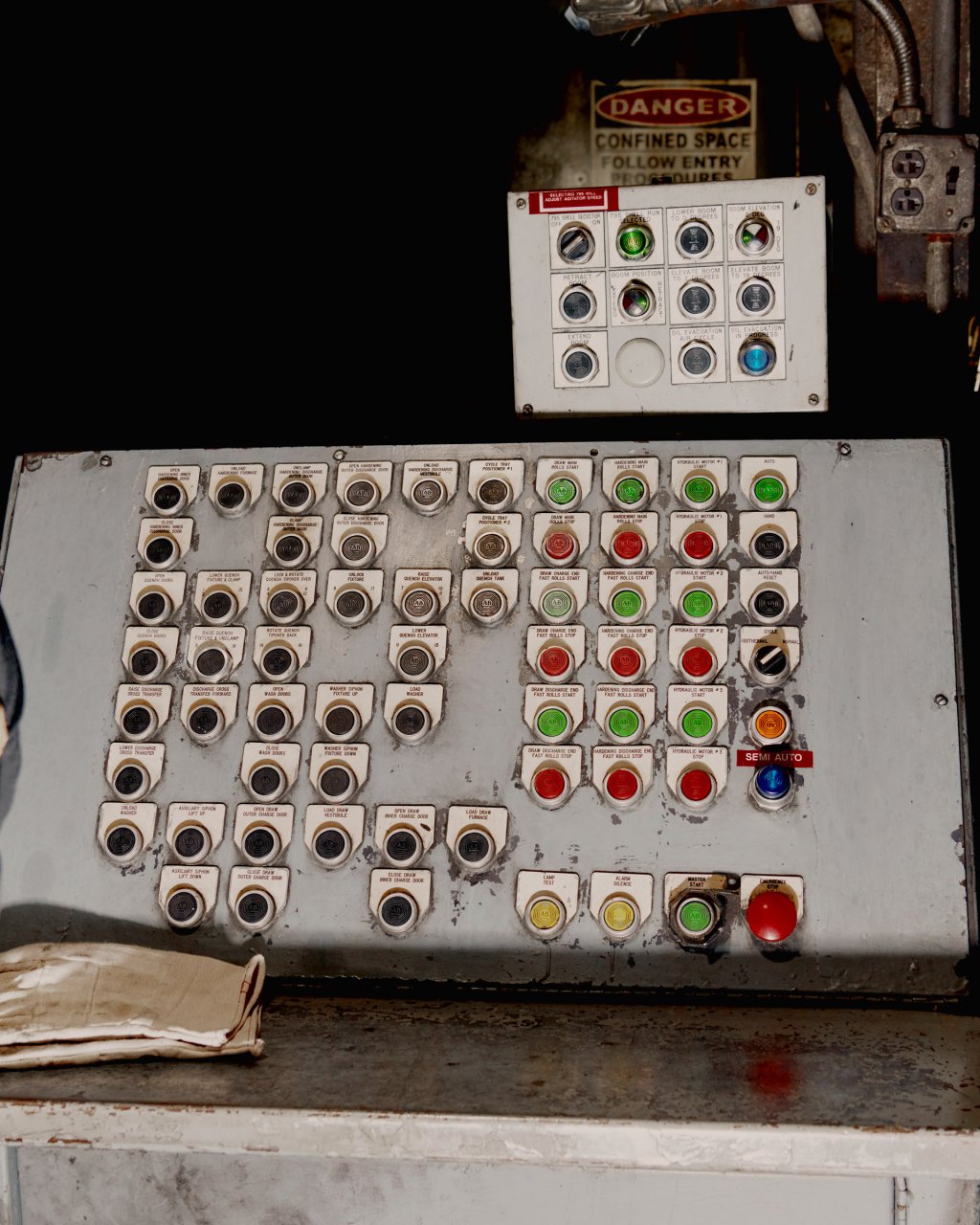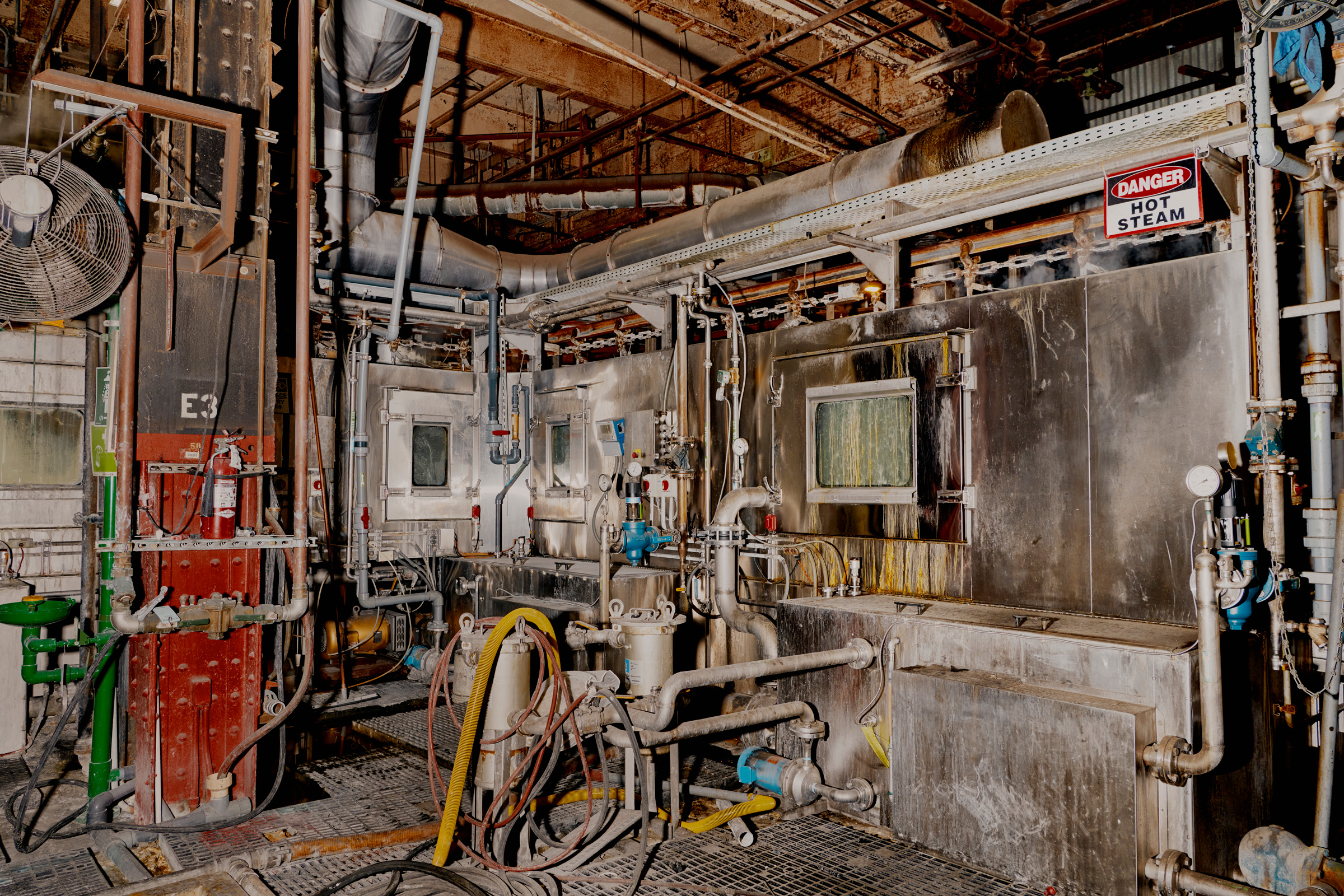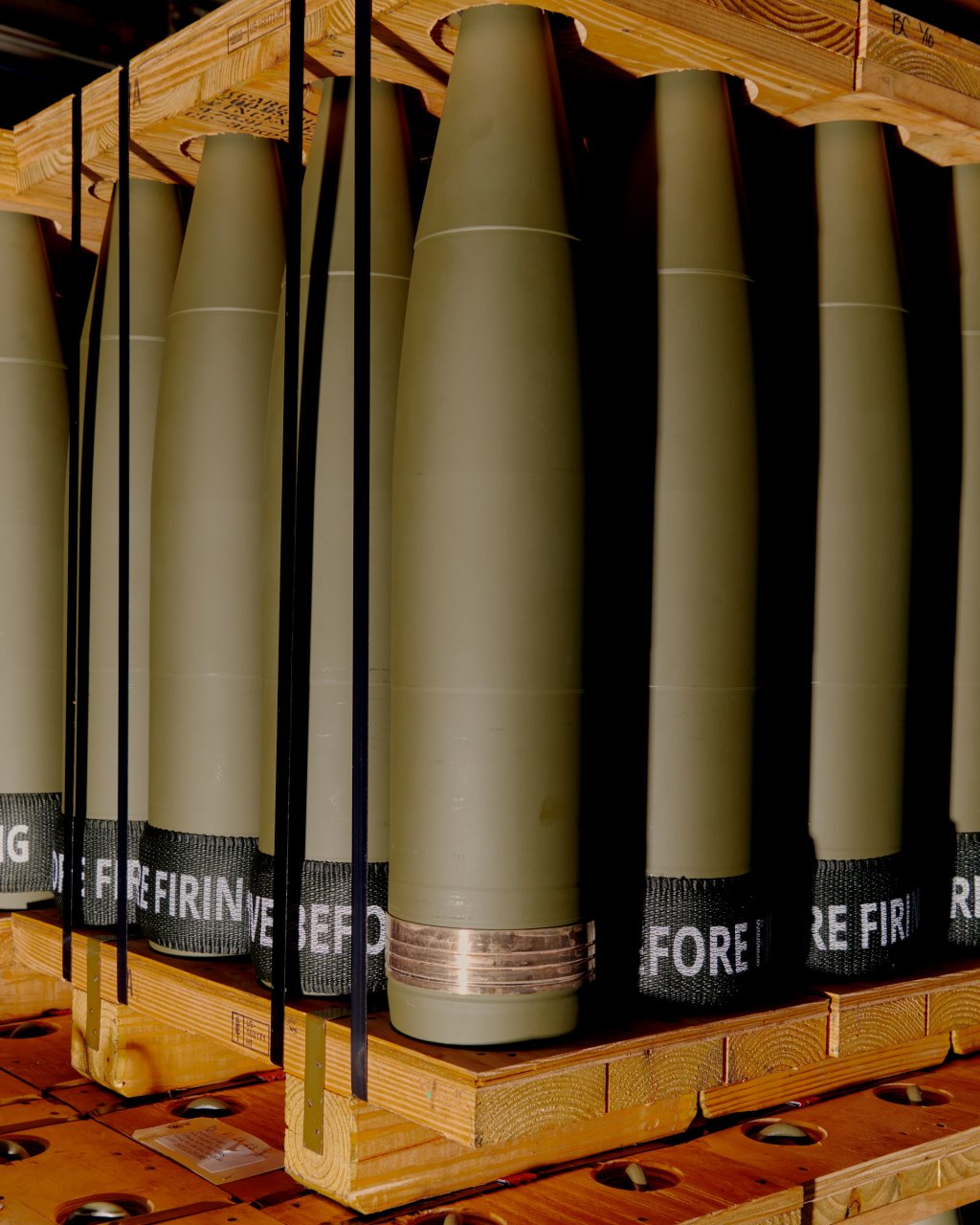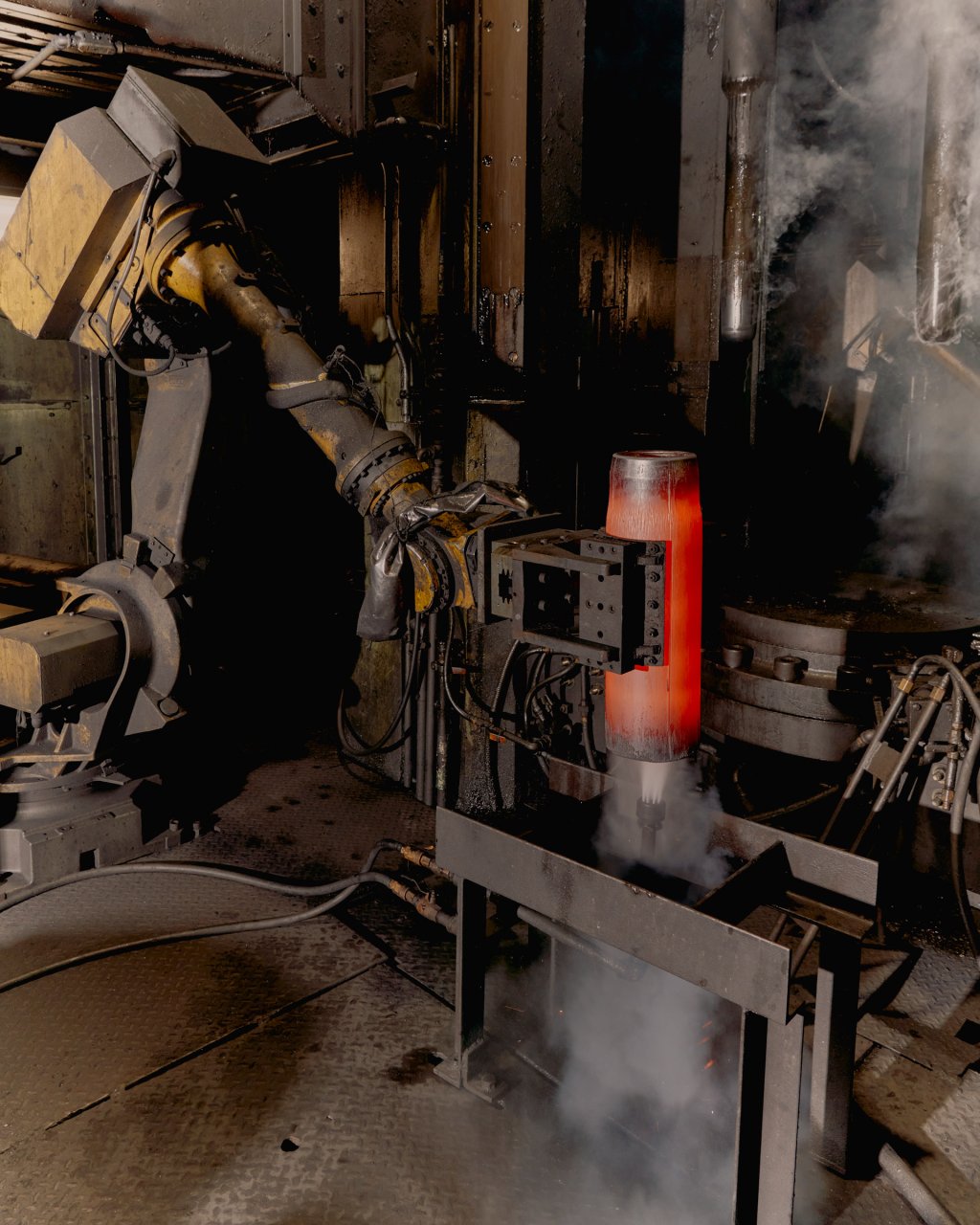US Army plant making artillery shells for Ukraine PHOTO
Abatch of artillery rounds destined for the Ukrainian battlefield twists and turns its way down a serpentine production line in northeastern Pennsylvania. Here, inside a series of red brick buildings where steam locomotives were repaired a century ago, teams of workers toil around the clock to ensure the industrial grinders, lathes and furnaces don’t stop rumbling.
“Everything is very large. It’s very complex, a lot of moving parts, tremendous amounts of heat,” says Richard Hansen, who oversees manufacturing operations at the Scranton Army Ammunition Plant. “You have to continually… keep it running. And it’s important for us to do that because we’re making ammunition,” Time reports.
The 155-millimeter shells, which are fired from howitzers several miles from their targets, are critical to the Ukrainian military’s nearly yearlong defense against the Russian invasion. Thousands of the unguided projectiles are fired each day in the conflict—a consumption rate that U.S. and Ukrainian officials compare to World War II—draining existing U.S. Army stockpiles.

The Biden Administration has already given Ukraine more than 1 million 155-millimeter shells. With hundreds of miles of contested frontlines, the Ukrainian military depends on firing the rounds from about 300 155-millimeter howitzers to repel Russian positions. With no end to the fighting in sight, the U.S. Army plans to boost its current production rate of around 14,000 155-millimeter howitzer shells per month to 20,000 by this spring and as many as 90,000 by 2025, spending $1.9 billion this year alone in the process.

The Scranton plant, which is contracted to crank out 11,040 shells per month, finds itself at the center of the Army’s planned industrial transformation. Roughly 300 employees work across the 15-acre complex, where hulking machinery cuts, melts, reshapes and refines 2,000-pound steel rods into sleek, two-foot-tall projectiles. The plant is owned by the Army but is operated by General Dynamics Corp.’s ordnance unit and currently runs 24 hours a day, five days a week with a weekend shift.
Each day, trucks deliver 20-foot-long steel rods weighing 2,000 pounds to the factory. The rods are left outside where a massive magnet hoists them into a red brick building known as the “forge shop,” where robotic saws slice the rods into foot-long chunks called “billets.”

Step inside the shop, away from the Pennsylvania winter winds, and you’ll immediately feel the warmth emanating from the three massive furnaces heated to 2,000 degrees. Each billet is fed into the fire where they stay for an hour, before emerging like red-hot coals that slide to a stop inside a darkened room with robotic arms.
The metal arms snatch each billet with smooth efficiency and move them to three individual stations. Over a 90-second period, the billet is pierced, stretched, and pressed into three-foot lengths against extreme heat. This happens hundreds of times each day. “Speed is key,” Hansen says, watching the process.
In the last stage, a robotic arm grasps the billet and places it over a round door where it’s neatly pushed into an underground conveyor system, called “the subway.” Each billet, still scorching hot, falls onto a gravity rolling line. “Don’t touch it,” Hansen says. “It won’t just burn your hand. It will take it off—bone and everything.” The billets are collected by hanging claws that carry them one by one around a large empty room along a track for four hours. Later, each billet is inspected to ensure its shape and consistency are up to specifications so it can become a projectile.

The last building is a 60-foot-tall warehouse the size of a city block. Exterior light streams in from the windows, which were installed before the widespread availability of indoor lighting. A successive series of machines gradually shave 30 pounds of excess metal from the ribbed, dark gray billets until they emerge as polished shells with tapered noses. “We work in specifications that are thousandths of an inch,” Hansen says. “Essentially, we’re taking a tube and turning it into a projectile.”
Each shell is hung on a hook where it’s automatically rotated to receive an even coat of Army green paint. The entire process takes about three days, but it could take several months before the shells are loaded onto pallets, driven 10 hours away on a big rig to another plant in Iowa, where they’re filled with explosives and affixed with fusing—effectively converting them into oversized bullets, ready to be fired from a howitzer.
The Ukraine conflict has exposed serious problems in the U.S. defense industrial base, according to Mark Cancian, a retired Marine colonel who’s now a senior advisor at the Center for Strategic and International Studies think tank in Washington. The Pentagon has spent the past quarter-century investing in expensive, high-tech weaponry. “The increased production will take months to come online and still will not fully cover the current artillery expenditure rates,” he writes. “Encouraging NATO countries and other close allies to provide stocks would help, and the United States has been pursuing this effort aggressively.”

Congress has stepped up. Since August, alone, Scranton and its sister-facility in nearby Wilkes-Barre have received more than $420 million in federal funding for a new building, additional equipment and improved automation that the Army hopes will boost production rates. The flood of money is a welcome turn for the Scranton plant, which was first constructed in 1908 by the DL&W Railroad as a steam locomotive repair shop. The Army acquired the property in 1951 at the onset of the Korean War and converted the facility to manufacture artillery shells.
Back then, the U.S. had 86 military ammunition plants as part of an industrial mobilization designed to meet wartime ammunition needs. Over the decades, the number of facilities dwindled. Today, the Pentagon has just five so-called “government-owned, contractor-operated” plants that supply the military with most of its conventional ammunition, propellants and explosives. General Dynamics has been enhancing recruitment efforts in anticipation of additional artillery orders for the Scranton plant.
Douglas Bush, an assistant secretary of the Army who is the service’s top acquisition official, said the Army might establish a new 155-millimeter assembly line in Texas and has invested $68 million in Canada “for them to stand up to retool a facility” to aid in artillery shell production. “We are sourcing and looking worldwide and a lot of that’s now actually flowing through,” he told reporters Jan. 25. “So, that’s going to be critical because production ramp-ups do take time and we are looking at various sources, including foreign production, to make sure Ukraine has what it needs.”








